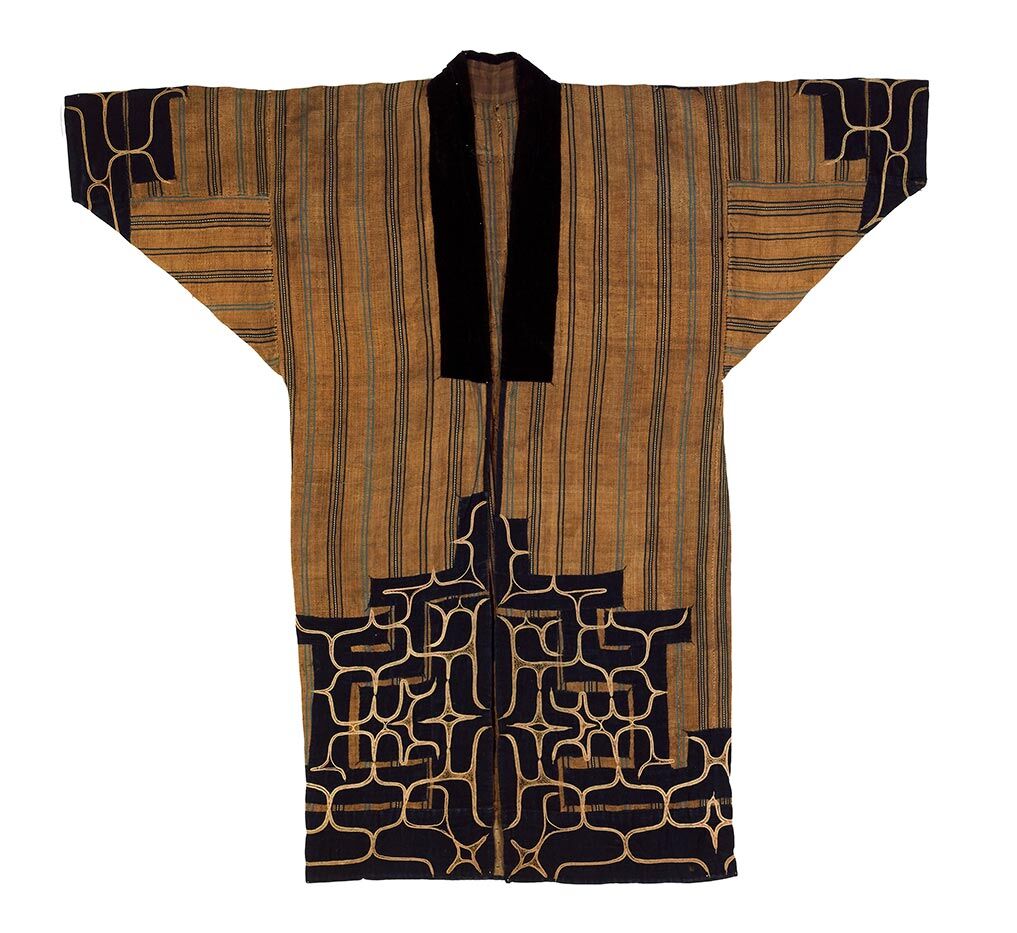Clothing is one of our most basic needs, along with food and shelter — but textiles are also important symbols of identity.
In honor of Asian American and Pacific Islander Heritage Month, WTOP is spotlighting the significance of textiles in many Asian cultures — from the sacred thread in India to the appliqué designs of Hokkaido — and efforts in the D.C. area to help preserve these ancient art forms.
Textiles are “usually the primary way that people communicate who they are,” said Lee Talbot, a curator at The George Washington University Museum and The Textile Museum. The Textile Museum, located in the Foggy Bottom area of D.C., is an almost 100-year-old institution focusing on handmade woven materials of non-Western peoples, including Indigenous Peoples of the Americas, Asia, Africa and the Pacific islands.
Its collection of some 25,000 textiles date back to 3,000 B.C. Talbot said the museum uses the collection as a way to introduce visitors to non-Western cultures.
“Often for many cultures, textiles are considered to be …. among their greatest art forms,” Talbot said.
Symbols of identity
Textiles communicate information, through their color, pattern, material and type, depending on the particular society.
“They can communicate information about your ethnic group, your gender, your social status, your marital status, your age, religion. All of those things can be communicated through textiles, when you are familiar with the visual cues of that particular culture,” Talbot said.
For example, the “sacred thread” is worn by Brahmin men in India. “Men of the Brahmin caste will wear a sacred thread over their left shoulder. So anyone who sees a man with this thread knows that he is a Brahmin,” Talbot said.
In Hokkaido, Japan, people traditionally used different kinds of bark to make fibers. Talbot also said that Hokkaido’s fabrics would typically have geometric appliqué type motifs on clothing, which had “very deep spiritual meaning, such as keeping away evil spirits.”
“You have to be part of the culture to understand all those visual cues, but anyone, say … 100 years ago or more, going to Hokkaido, they will be able to recognize that, ‘Oh, that person is Ainu,’ a native of this island, because of the fibers and the types of clothing and the designs,” Talbot said.

Textiles could also be used to identify your position in society. Talbot said that historically and into the 20th century, there were laws in China, Korea and Vietnam that would say who could wear what.
“Each social class, the government would have specific requirements,” Talbot said. “And then even within the higher ranks, which would be the government officials … there would be … badges that you would wear on the front and back of your outer garments so that everyone would know exactly what your rank was in the government hierarchy.”

An endangered art form?
Susan McCauley is the owner of Mekong River Textiles in Maryland. Since 1986, she has worked directly with weavers in Thailand, Laos and Cambodia and has brought their fabrics to her studio.
McCauley buys the fabrics directly from the makers, holds shows that highlight them and designs clothing that showcases the beautiful handwoven fabrics.
“This is what I do here in the States. I sell the fabric and I design clothing and have created just a little market,” McCauley said.
Through her work and travels, she said the textile traditions in communities around the world are in danger of disappearing because of economic factors.
Talbot said that textile production has become more and more industrialized, and that has encroached on traditional hand production.
Handmade textiles are often more expensive than machine-made fabrics, which may be cost-prohibitive to some.
“But what is the cost of having all this cheap fabric and all the dyes that pollute? That’s another cost,” McCauley said, acknowledging the difficulty of the decisions society needs to face.
While economic factors are a big threat to the continuation of these textile traditions, McCauley said climate change poses a danger to the silkworms that make thread.
“There’s a threat to the silk in Southeast Asia and other countries … the very basis of their work is threatened, if they can’t … cultivate the worms … and keep them making the thread, then that can easily fail,” she said, adding that the climate is also a factor in growing cotton.
Lastly, as younger people get educated and get interested in different kinds of jobs, they also might not choose to continue in the tradition of textile making.
“They’re all endangered,” Talbot said, and it would take but one generation not making textiles before that knowledge is lost, and “we’re not able to pass it on into the future.”
‘Thousands of years of history and tradition’
A lot of Asian and Pacific Island cultures have maintained a great respect for handmade textiles that Talbot said has slowly died in the West since the beginning of the Industrial Revolution 200 years ago.
“We lost this notion of the magic of creating textiles by hand from natural materials in your local environment,” Talbot said.
In addition to being beautiful, it’s also a piece of history, culture and artistic expression, McCauley said.
“Maybe there’s ways that they can think about making things themselves or investing in people that do,” McCauley said. “It’s hard … but I think if people put their heads together and work on it and find the right people to work with things could change.”
Talbot said buyers need to be educated about what they’re getting when they purchase something made by hand.
“If you’re purchasing something that’s handmade, you are helping to sustain these age-old traditions that have traditionally been a very important part of the local cultures,” Talbot said. “When we pick up and we touch something that’s been handmade, for example a handmade textile from Asia … it embodies many thousands of years of history and tradition.”
Through July 1, the Textile Museum is holding an exhibit on prayer rugs from the Islamic world. The museum does not have any permanent displays.
“We’re constantly rotating our exhibitions. So you can come again and again and see lots of different handmade textiles” from around the world, Talbot said.








